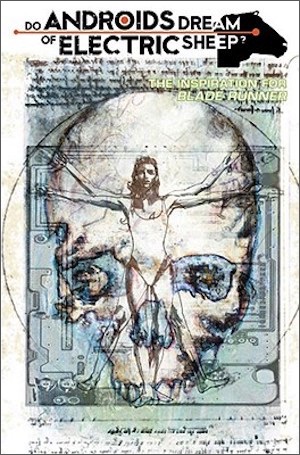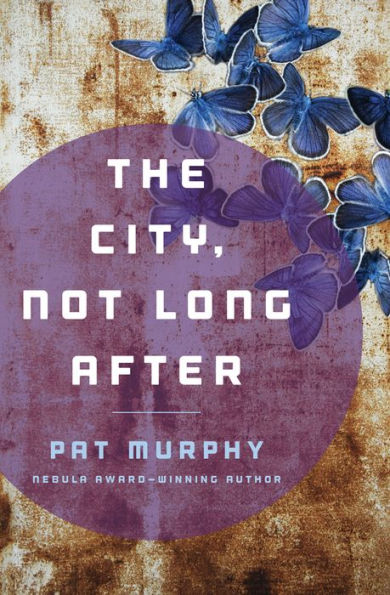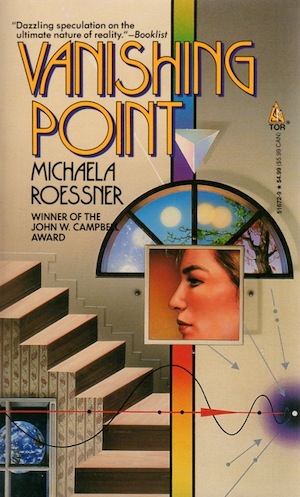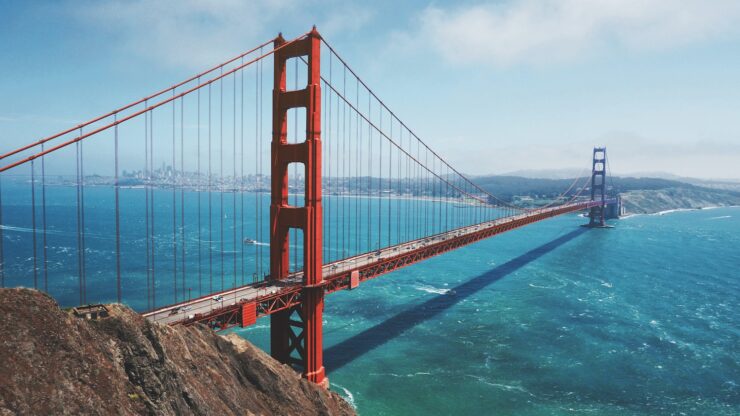San Francisco and the Bay Area are world-famous communities to which many have moved…and many would move if they could afford it. A fair number of SF authors have looked at the hordes populating the Bay Area and wondered “what would all this look like if there were a lot fewer people?” Here are four works that answer that question.
Do Androids Dream of Electric Sheep by Philip K. Dick (1968)

World War Terminus showered the world with radioisotopes. Fallout exterminated entire species now preserved as android relics. Human populations dwindled. Sufficiently robust humans survived…for a time. Any humans remaining on Earth would be subject to genetic damage. Thus the push to colonize Mars (and any other suitable Solar real estate) to preserve the species.
Humans created android slaves to build the off-world colonies, new homes for real humans. But some androids fled their mission and returned to Earth. San Francisco operative Rick Deckard asked to hunt down six Nexus-6 androids who have escaped slavery. This will be no easy task: the distinctions between human and android are so subtle that even androids themselves do not always know what they are. Deckard is nothing if not determined. Subsequent events shake him, undermining his sense of reality, but he persists.
This novel was the basis for the movie Blade Runner (whose title comes from a similarly-titled but otherwise unrelated Alan E. Nourse novel1). Dick’s concerns were very different from those of the film’s director, Ridley Scott. Novel and movie share some plot elements but the narratives are quite distinct.
Children of Morrow by H. M. Hoover (1973)

Not too far from the former location of San Francisco, the Major rules his primitive community, the Base. He believes that civilization has been destroyed by lack of discipline. If his subjects are to survive, they must follow his orders without complaint or hesitation. The Major will not hesitate to punish those who displease him.
The Morrow community lives a fair way away from the Base. They have a more informed perspective on the disaster. Although they would agree that human hubris was to blame, they know that what nearly smothered the Earth was the pollution-driven Death of the Sea.
Morrow and Base are very nearly isolated from each other save for telepathic contact between Base children Tia and Rabbit and Morrow children Ashira and Varas. It is a slender connection, but it is the only hope that Tia and Rabbit have when they are forced to flee their brutal community.
The City, Not Long After by Pat Murphy (1989)

Legends promised that if “the monkeys were to leave the monastery (in the Valley of Peace), they would bring peace to the world.” Legend was hard, cold fact. The monkeys were vectors for a deadly disease to which most humans had no immunity. Delivered to facilities far outside the Valley of Peace, the monkeys triggered a global pandemic that left people too busy dying to fight each other.
Decades later, the world has recovered enough for would-be warlord Fourstar to begin building a West Coast Empire. San Francisco, now the domain of artists and freethinkers, is in his path. San Francisco’s people reject violence as an option. The general is quite comfortable killing his way to victory. How, then, can San Francisco successfully resist without betraying their principles?
Once again, humans learn that any supposedly hopeful prophecy needs to be closely examined by steadfast pessimists. Well, the handful of survivors, at least, learned that lesson.
Vanishing Point by Michaela Roessner (1993)

Thirty years ago, ninety percent of the human race suddenly vanished. The ten percent left behind were not enough to sustain pre-Vanishing civilization. A painful readjustment period ensued. Decades later, communities like the one near the Winchester Mystery House have arrived at a stable, sustainable arrangement in which survival is no longer in question.
Time for science to finally solve the question of where the Vanished went. At least, it might be the time, if there weren’t an army of fanatics descending on the community, convinced God wants them to snuff out farming and civilization to usher in the Last Trump. Science will have its day only if the true believers can be repulsed.
One could compose a thematic trilogy from this novel, The City, Not Long After, and Lisa Goldstein’s A Mask for the General. Unfortunately, the last one does not involve a depopulated San Francisco, so there is no pretext for me to even mention it here.
***
There are far more than four novels that have depopulated San Francisco. Rather frustratingly for me, I mentioned the obvious ones in previous essays: The Earth Abides, Dark December, even On the Beach (mostly set in Australia but with a scene in San Francisco). No doubt there are perfectly obvious choices I am overlooking.2 Feel free to remind me in comments.
In the words of fanfiction author Musty181, four-time Hugo finalist, prolific book reviewer, and perennial Darwin Award nominee James Davis Nicoll “looks like a default mii with glasses.” His work has appeared in Interzone, Publishers Weekly and Romantic Times as well as on his own websites, James Nicoll Reviews (where he is assisted by editor Karen Lofstrom and web person Adrienne L. Travis) and the 2021, 2022, and 2023 Aurora Award finalist Young People Read Old SFF (where he is assisted by web person Adrienne L. Travis). His Patreon can be found here.
[1]At one point there was a plan to film the Alan Nourse novel “The Bladerunner,” AKA “The Blade Runner.” Someone hired William S Burroughs to write a script. An interesting choice, as Burroughs was possibly the least Nourse-like author possible. I believe that the script can be found online, but of course links do not work in footnotes.
[2]I know that Mike Chen’s “A Beginning At the End” is set in a pandemic-depopulated San Francisco but I have not read it. Feel free to make a case for it in comments!











In retrospect, horde is needlessly negative. The people are what make SF and the Bay Area what they are.
Surely Earth Abides is the canonical example of a depopulated Bay Area.
2: It is but I mentioned it before.
Trivium: this is, as far as I can tell, my 400th tordotcom piece.
3: Congrats and here’s to 400 more!
I have been on a Mike Chen kick lately but haven’t read that one, I’ll look for it. Also wasn’t Blade Runner: The Movie set in Los Angeles (and a few years ago now, so it’s alternate history rather than SF)?
4: The movie adaptation was but the book is set in SF.
400 posts! Tied with Isaac Asimov’s F&SF science essays, I believe! Congratulations!
400! Are you the most prolific author, or just the one who’s avoided the sack the longest
So. Much. Star. Trek. There.
;)
LOL!
7: I don’t feel prolific. Every year I promise myself this is the year I write 104 pieces for tor and every year I fall very short.
I think Le Guin’s Always Coming Home is set near a flooded Bay Area long after something so bad nobody remembers the details. As previously discussed, I’ve never actually finished the book so could not include it.
I know that Norman Spinrad lived in San Francisco for a time, but I can’t recall if any of his novels were set there. Bug Jack Barron is set in California, but I can’t so far find which city.
You are right about Always Come Home, I believe.
Carrie Vaughn’s Bannerless and The Wild Dead (plus related short stories) are set in a post-Apocalyptic, so nearly depopulated, society on the “Coast Road” of what used to be California. I don’t know for sure exactly where — I think of it as on the Central Coast — say, between Oxnard and Monterey — so not quite the Bay Area.
Poul Anderson’s No Truce With Kings was set in a post-Apocalyptic California, with the denouement set in San Francisco, but is probably too short to count as a novel.
Laurie R. King’s sole genre novel, Califia’s Daughter, is set in an unnamed Northern California valley, after an IIRC-unspecified collapse; I’d have guessed near San Francisco, but north rather than south as @11 guesses for Vaughan’s. IMO it wasn’t very good, although at least it didn’t propose that a low-tech civilization would still be able to produce relatively safe&effective contraceptive drugs for women (as Vaughan does). NB: this was published under the name “Leigh Richards”.
@10: I’d have guessed BJB was set in LA rather than SF as it seems to be in a monster media market. (If someone had asked me without prompting I would have said NYC, but the Wikipedia summary reminds me that the governor of California has a role.) ISTR it’s also not post-crash, given that producing immortality requires high tech.
@0: congratulations on the big 400!
@9 & 11 Specifically, Always Coming Home is set in “the Valley of the Na” — Napa valley — and there are various hints of what happened to our “civilization,” but they never add up.
@10 In Spinrad’s Journal of the Plague Years, which is a somewhat-objectionable satire of the AIDS crisis of the ’80s, San Francisco has been set aside as a reservation for those suffering the unspecified but sexually-transmitted plague — which results in it being largely-depopulated, since the patients generally don’t live to a ripe old age. Weirdly, when someone discovers a cure at the end, it’s also sexually-transmitted.
The Fifth Sacred Thing, by Starhawk
I haven’t read them since the 1990s, but I recall Lisa Mason’s time travel books Summer of Love and Gilded Age (also published as The Golden Nineties, I am pretty sure) as having a lot of San Francisco flavor to them (both are set there). The former is set 1967, the latter in 1895.
@8: If we’re looking for “Star Trek” where – spoilers – San Francisco is severely depopulated, as we may be, I suppose halfway through “Star Trek IV” everyone dies, and if someone would tell me whether the end of the first season of “Star Trek Enterprise” is in San Francisco (apparently it isn’t specified), almost everyone’s dead there, too.
“Charmed” had an episode where sister Paige didn’t exist and demons took over the city or maybe the world. As far as I remember, we didn’t see many humans left in town.
The Scarlet Plague … by Jack London, published in 1912:
The Project Gutenberg eBook of The Scarlet Plague, by Jack London
“To think of it! I’ve seen this beach alive with men, women, and children on a pleasant Sunday. And there weren’t any bears to eat them up, either. And right up there on the cliff was a big restaurant where you could get anything you wanted to eat. Four million people lived in San Francisco then. And now, in the whole city and county there aren’t forty all told. And out there on the sea were ships and ships always to be seen, going in for the Golden Gate or coming out. And airships in the air—dirigibles and flying machines. They could travel two hundred miles an hour. The mail contracts with the New York and San Francisco Limited demanded that for the minimum. There was a chap, a Frenchman, I forget his name, who succeeded in making three hundred; but the thing was risky, too risky for conservative persons. But he was on the right clew, and he would have managed it if it hadn’t been for the Great Plague. When I was a boy, there were men alive who remembered the coming of the first aeroplanes, and now I have lived to see the last of them, and that sixty years ago.”
OMG! Someone who actually reads PKD (falls to the ground and weeps).
Tim Powers’ Dinner at Deviant’s Palace is set in a depopulated future Venice. Which, now that I look it up, is in Los Angeles. Oh well. And Margaret St. Clair’s The Dancers of Noyo is set in a California depopulated by the bone melt plague (which sounds nasty), but as the title suggests, the action takes place somewhat north of San Francisco. Guess I got nothin’
Richard Paul Russo’s Carlucci trilogy is set in a future San Francisco that is grim and getting worse. But the title character stays on, along with his coworkers and friends and neighbors, because they love the City so much. This is a series about San Francisco by someone who really gets it. Russo’s imagination for worst-case scenarios is wild, but it’s the kind of wild that could only happen in San Francisco.
Virtual Light by William Gibson is set in SF and area. The sequels (All Tomorrows Parties and Idoru) range more widely.
David Gerrold’s War Against the Chtorr books had a city’s downtown converted into free range for people whose minds had snapped from how horrible the world has become (and the sort of therapy that appears to still exist you’re better off without). Been a long time since I read them but I have a memory bump that wants to say it’s SF.
Re: The City not Long after. I remember that one simply for the odd artists who live in the remains of SF and want to paint the Golden Gate Bridge blue.
Foreign Bodies by Stephen Dedman was written in 1999 and takes place in 2014, (I think?) In San Francisco, so he wrote about a future SF, even if it is now technically the past. It was a prescient novel for sure.
Meg Elison’s The Book of the Unnamed Midwife starts in San Francisco — the midwife is a nurse there when the plague hits, though afterwards she leaves and ranges north and into the midwest.
Yes to the Carlucci trilogy by Russo.
I think the scene in the Chtorr book was set in Oakland.
Nobody’s mentioned Leiber’s Our Lady of Darkness yet?